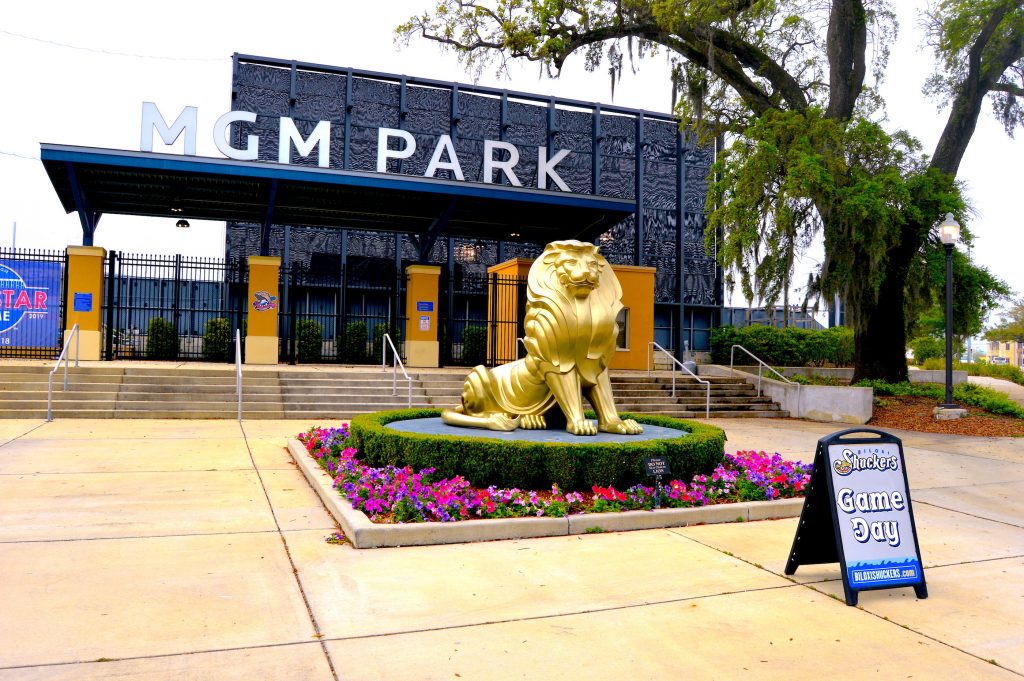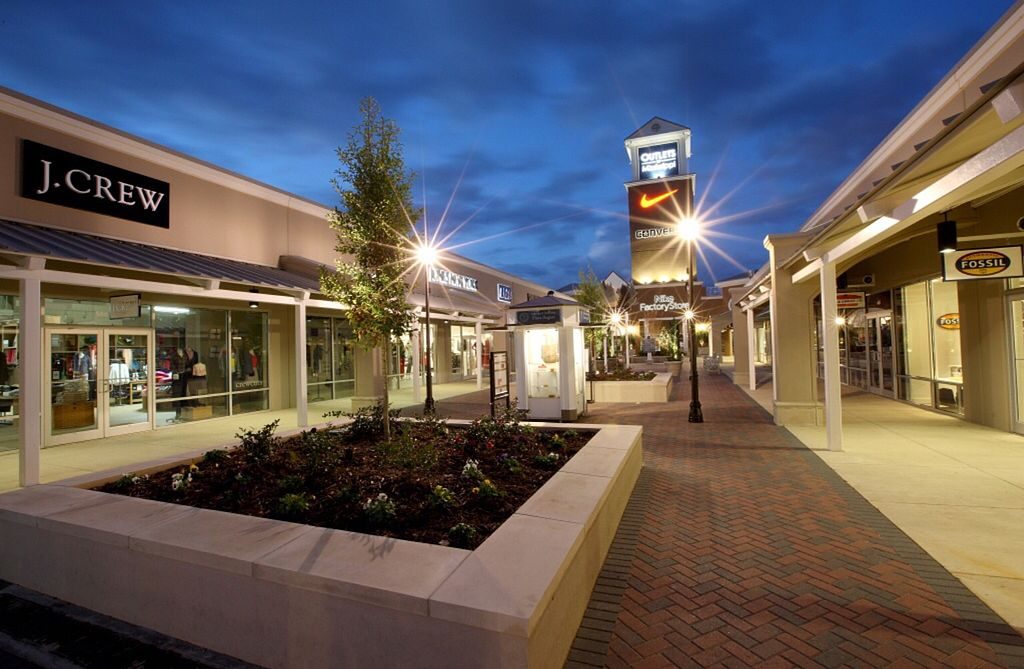In 2013, the city of Biloxi conducted a feasibility study that predicted the stadium would draw 280,000 fans annually, or a little more than 4,000 per game.
The study, a common exercise in such municipal financing plans, provided city leaders with what they needed to move forward. The city borrowed $21 million to help build the stadium. Unfortunately, for the city – and taxpayers – the hopeful projections of that $25,000 study have not panned out.
The Shuckers have never drawn more than 180,000 fans in a year, and last year they were down to just over 160,000 in attendance.
As a result of the lower than predicted numbers, the city is forced to reach into its general fund for about half of the $1.2 million they owe each year on the debt. Many leaders hold out hope that if more development comes to the area, it will increase attendance and revenue.

In another minor league town in Mississippi, there is plenty of development around Trustmark Park in Pearl. An outlet mall, funded in part by the state’s Cultural Retail Attractions Program, Bass Pro Shop, Sam’s Club, and a Holiday Inn all surround the park on land that was mostly swamps not so long ago.
Still, the Mississippi Braves, who play in the Southern League with the Shuckers, drew just over 150,000 last year fans last year. This is down considerably from the 190,000 they averaged in 2016 and 2017, and from 2013 through 2015 when their attendance was over 200,000 each year.
What has this meant for Pearl? The money from this new revenue stream hasn't been enough to cover the debt on the shopping center and ballpark complex. In 2013, the city paid $967,944 to cover the shortfall, though that amount has declined in recent years, shrinking from $911,748 in 2014 to payments of $589,902 in 2015 and 2016 and $619,048 in 2017, the last year records were available.

The city also has to pay $651,852 annually until 2024 to cover a $4,433,165 agreement with the site developers. These outlays are covering underpayments from 2011, 2012 and 2013 on sales tax diversions from the Mississippi Department of Revenue that the city didn't give to the developer.
The Braves have turned the game of pitting city against city into an art form. They moved their Single-A franchise from Macon, Georgia to Rome, Georgia after securing $15 million to build a new stadium. They received $28 million from Pearl when the Double-A team moved from Greenville, South Carolina. And they were able to secure $64 million from Gwinnett county, Georgia when they moved the Triple-A franchise from Richmond, Virginia.
But their biggest win, if you will, was in Cobb County, Georgia. The Braves were able to receive $722 million from the county to move the big league team just north of the city in 2017.
It’s hard to blame the Braves, or any team that receives taxpayer subsidies. Their owner, Liberty Media, is doing what any good owner does; negotiating the best deal for its company and shareholders. And the attraction for mid-sized cities to have a minor league ballpark is understandable. We buy into the glitz or maybe the community pride that comes with having a professional franchise in your hometown. It gives local politicians something to highlight as everyone is convinced that minor league baseball is good for tourism and no matter what the taxpayer cost, the community is better off. Yet, we have mounds of economic data that tell us that simply isn’t true.
As the years pass and as more become aware of just how big of a raw deal sports subsides – minor league or professional – often are for cities, perhaps more local officials will choose not to give in to the economic development game. Or maybe local communities will rise up.
As for Biloxi and Pearl, the best they can do is hope the numbers turn around…and that the Braves and the Brewers don’t go looking for a new ballpark when their leases run out.
This column appeared in the Madison County Journal on May 1, 2019.